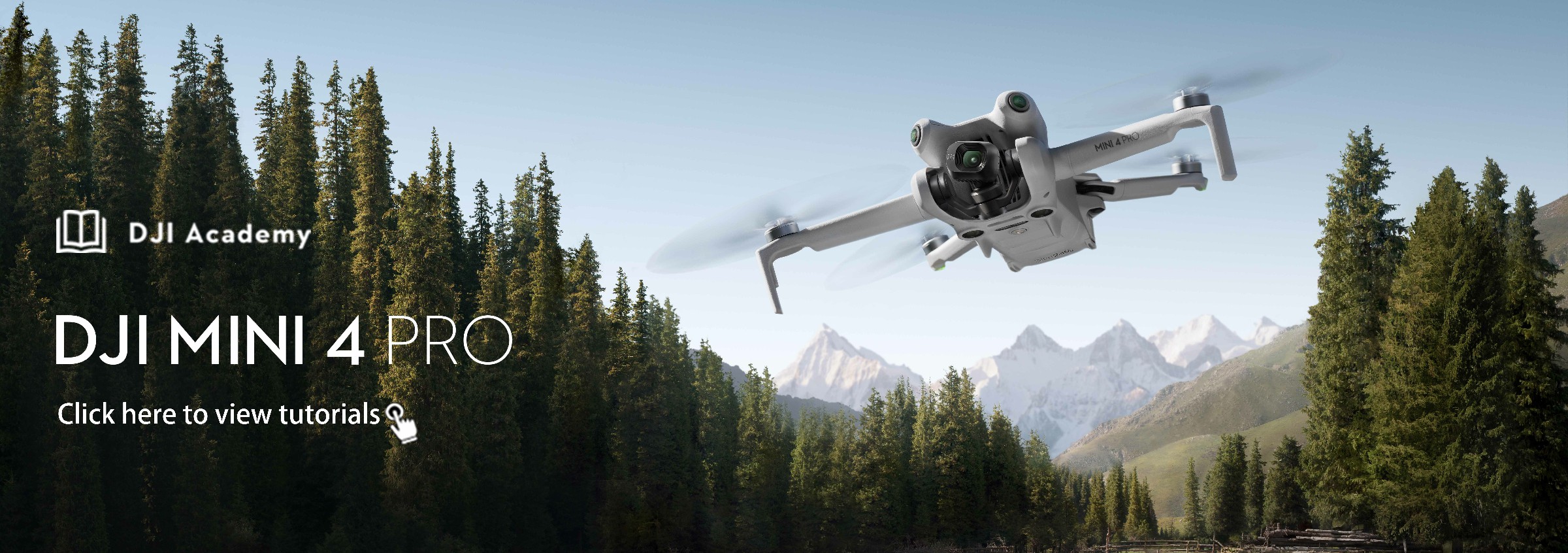Unboxing
What’s In the Box?
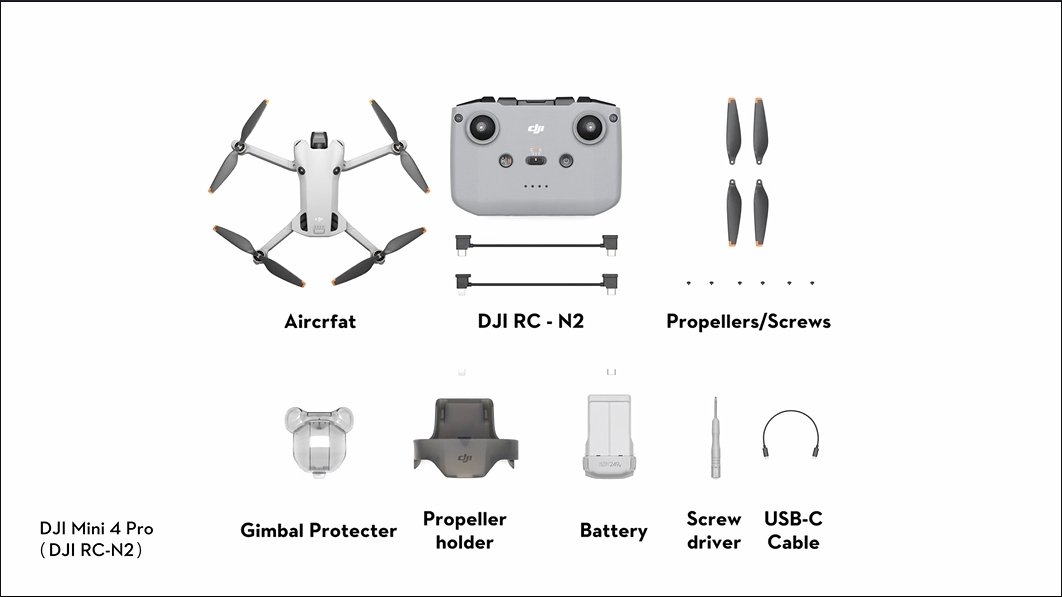
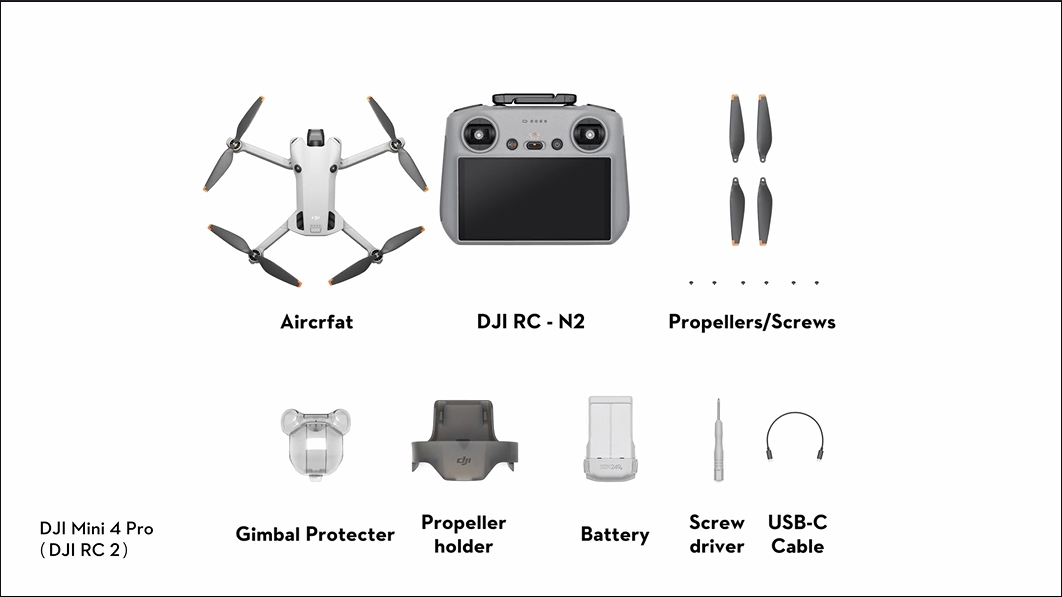
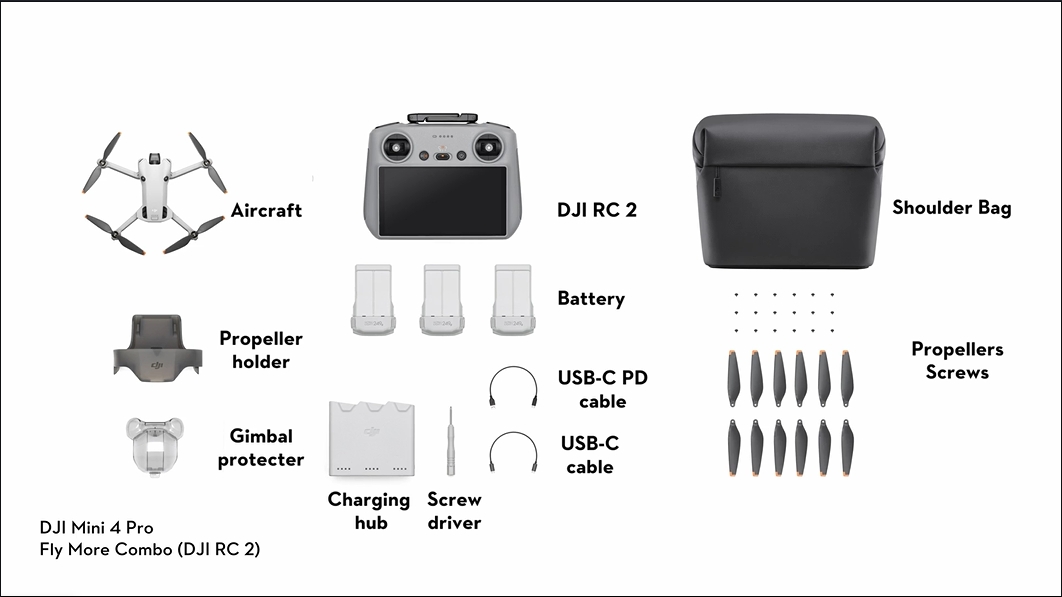
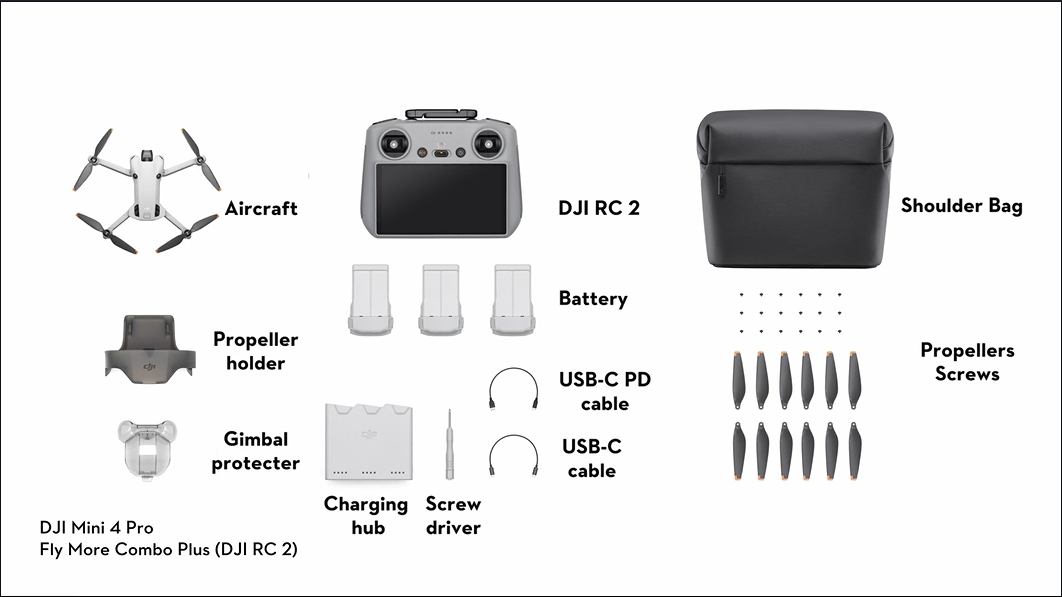
Charging Instructions
Charging Method
Fully charge the Intelligent Flight Battery before each use. It is recommended to use the charging devices provided by DJI, such as DJI Mini 3 Series Two-Way Charging Hub, DJI 30W USB-C Charger, or other USB Power Delivery chargers. Please follow the instructions provided below to properly charge the Intelligent Flight Battery and remote controller:
 |
The battery cannot be charged if the aircraft is powered on. |
Charging Duration
During the charging process, the battery level LEDs of both the Intelligent Flight Battery and remote controller will blink sequentially, indicating the current battery level. Once all the battery level LEDs are off, it indicates that the battery is fully charged and charging is complete. Please disconnect the aircraft and charger.
|
|
DJI 30W USB-C Charger |
9V/3A USB Charger |
5V/2A USB Charger |
| DJI Mini 4 Pro Intelligent Flight Battery |
Connecting the aircraft with the battery mounted: Approx. 70 min; Using the Battery Charging Hub: Approx. 58 min |
/ |
/ |
| DJI Mini 3 Series Intelligent Flight Battery Plus (Compatible) |
Connecting the aircraft with the battery mounted: Approx. 101 min; Using the Battery Charging Hub: Approx. 78 min |
/ |
/ |
| DJI RC-N2 |
/ |
/ |
150 min |
| DJI RC 2 |
/ |
90 min |
/ |
Battery Maintenance
The battery automatically checks the voltage differences between battery cells and decides whether maintenance is required. In case of a significant voltage difference requiring maintenance, after the battery is inserted into the aircraft and powered on, the aircraft will not be able to take off, and a prompt for maintenance will appear in DJI Fly. Upon receiving the battery maintenance prompt in the app, follow the instructions to fully charge the battery and let it stand still for 48 hours.
For more information on battery maintenance, please refer to the Battery Daily Maintenance Guide.
Activating Your Device
Prior to utilizing all functionalities of DJI Mini 4 Pro, it is essential to activate the product through DJI Fly during the initial usage.
Attaching and Removing the Gimbal Protector
 |
Please remove the gimbal protector before powering on your aircraft to prevent any damage to the gimbal motor. Failure to remove the gimbal protector may also pose a serious risk to flight safety. |
Removing the Gimbal Protector

Attaching the Gimbal Protector

Powering on/off the Device
Press, and then press and hold the Power button on the aircraft or remote controller to power on or off the device.
Activating the Remote Controller
Remove the control sticks from their storage slots on the remote controller and screw them into place. Power on the remote controller and follow the on-screen prompts to activate the remote controller.
Downloading DJI Fly
When using the DJI RC-N2 remote controller, click to download the DJI Fly app onto your mobile device for use.
Connection and Linking
The remote controller is already linked to the aircraft when purchased together as a combo. Therefore, you can directly power on and activate your device for usage.
 |
If a USB connection prompt appears when an Android mobile device is used with DJI RC-N2, select the option to charge only. Other options may cause the connection to fail. |
Activating the Aircraft
DJI Mini 4 Pro requires activation with DJI Fly before first use. After powering on the aircraft and remote controller, run DJI Fly, and follow the on-screen prompts to activate DJI Mini 4 Pro. An internet connection is required for activation.
For an overview of how to activate your device, watch the video below:
You can go to the Device Info Inquiry page to check the activation information, warranty period, and DJ Care service plan benefits.
Basic Use
Attaching and Detaching the Propellers
Camera drones have two types of propellers and motors: CW and CCW, which are designed to spin in different directions. Marks are used to indicate which propellers should be attached to which motors.
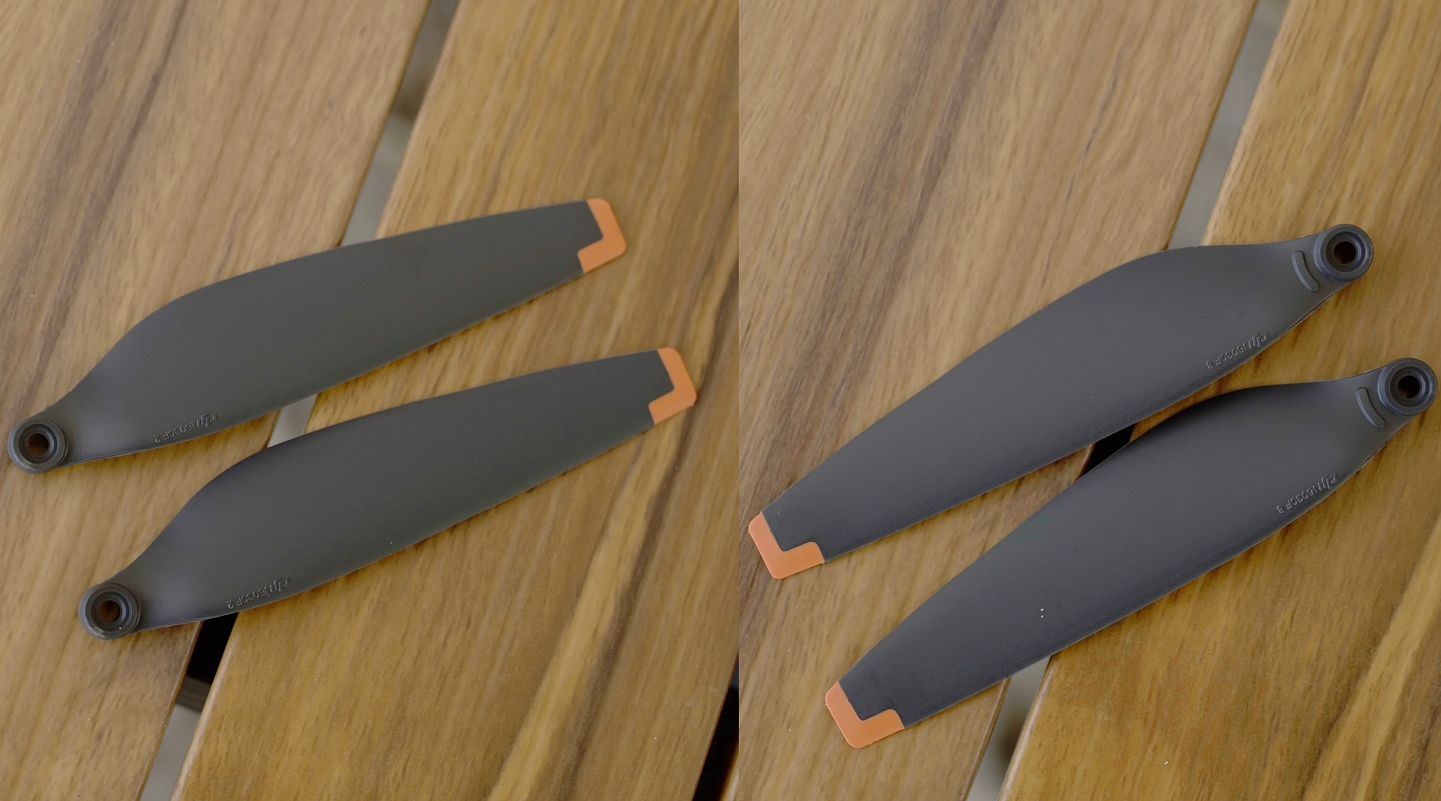
Attach the marked propellers to the marked motors, and the unmarked propellers to the motors without marks.
To learn more about how to attach or detach the propellers, check the video:
First Flight
After the aircraft and remote controller are activated, please watch the video to get easy-to-use operations before you head out to fly.
Firmware Update
A prompt will appear in the DJI Fly app if a new firmware is available. Follow the on-screen instructions to update the firmware. The DJI RC 2 remote controller or mobile device must be connected to the internet during firmware update.
Advanced Usage
Portrait Mode
The camera will rotate 90 degrees when switching to the Portrait mode, for shooting portrait footage. (Portrait mode is not supported when using Pano or the Asteroid shooting mode in QuickShots.)
To gain a comprehensive understanding of recording in the Portrait mode, please watch the video below:
Panorama
DJI Mini 4 Pro supports Panorama shooting mode, including Sphere, 180°, Wide Angle, and Vertical.
Watch this video to know more about the Panorama function:
FocusTrack
FocusTrack includes Spotlight, Point of Interest, and ActiveTrack.
For an overview of how to use FocusTrack, watch the video below:
MasterShots
The MasterShots mode allows DJI Mini 4 Pro to automatically perform diverse camera movements, shoot and edit multiple clips, and generate a short cinematic video.
Refer to this video for using MasterShots:
QuickShots
QuickShots shooting modes include Dronie, Rocket, Circle, Helix, Boomerang, and Asteroid.
For an overview of how to use QuickShots, watch the video below:
Hyperlapse
Hyperlapse shooting modes include Free, Circle, Course Lock, and Waypoint.
For an overview of how to use Hyperlapse, watch the video below:
Waypoint Flight
Waypoint Flight brings automated flight experience. The aircraft can capture images during a flight according to the waypoint flight route generated by the preset waypoints.
Watch this video for more details about Waypoint Flight:
Cruise Control
The cruise control function enables the aircraft to lock the current control stick input of the remote controller when conditions permit. Without the need to continually move the control sticks, long distance flights become more effortless.
Watch this video for more details about Cruise Control:
Storing and Exporting Footage
Installing and Removing a Memory Card
Upon receiving your purchased memory card, you will also find a card holder that doubles as a memory card adapter, which is designed to seamlessly connect the TF slot of a computer, enabling easy transfer of footage. Please note that the memory card is inserted into the aircraft without the card adapter.
Click to learn more about Installation and Removal of Drone Storage Card.
Storing Photos and Videos
|
|
Memory Card Not Inserted |
Memory Card Inserted |
| DJI Mini 4 Pro |
Store to the internal storage of the aircraft. (Built-in 2GB) |
Choose to save to the internal storage or microSD card. |
| DJI RC 2 |
Store to the internal storage of the aircraft. (Built-in 32GB) |
Choose to save to the internal storage or microSD card. |
| 1. A UHS-I Speed Grade 3 rating or above microSD card is required due to the fast read and write speeds necessary for high-resolution videos and photos. Click to check more information about recommended microSD cards of DJI Mini 4 Pro. 2. DJI Mini 4 Pro supports QuickTransfer, enabling fast downloads of drone footage directly to your mobile device. If you do not require screen recording, there is no need to insert a microSD card into the remote controller. Click to learn about the recommended microSD cards for DJI RC 2. |
||
Exporting Photos and Videos
1. Use QuickTransfer to export the footage to a mobile phone.
2. Connect the aircraft to a computer using a data cable, export the footage in the internal storage of the aircraft or in the microSD card mounted on the aircraft. The aircraft does not need to be powered on during the exporting process.
3. Remove the microSD card from the aircraft and insert it into a card reader, and export the footage in the microSD card through the card reader.
Click on Aircraft Photo or Video Files Export Guide for a step-by-step guide to exporting photos or videos from the aircraft.
Available Accessories
With its great accessories, DJI Mini 4 Pro helps you put the icing on the cake. For detailed information on compatible accessories, click on Aircraft Accessory Compatibility. Or explore the extensive range of accessories at the DJI Store, where a wide array of options awaits you!
Attaching and Detaching the ND Filter
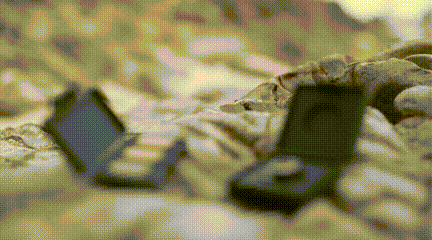
Tips for Flight Safety
We've rounded up some coping tips for flight safety and we'd like to share them with you, including local laws and regulations (flight limit and drone transportation requirements), pre-flight checklist, and environmental considerations.
Regulations and Policies
1. As laws and regulations regarding drones can vary widely depending on location, please check local policies and regulations before flying: Checking Local Regulations & GEO Zones.
2. To help users fly more responsibly, we’re offering this exclusive guide highlighting the drone laws and battery transportation policies of over 20 popular destinations around the globe. Click Here.
Environmental Consideration
1. Always fly in open areas and keep your drone within line of sight. For safety reasons, you should never fly above people, animals, or moving vehicles: Flight Safety Guidelines.
2. Minimize interference by avoiding areas with tall and dense buildings.
3. The maximum flight altitude of the aircraft is 500 m. For details about maximum flight distance, refer to the Specifications in the official website. Beginner pilots should not be able to fly very far. Click Altitude and Distance Limit to know more.
Please note that the vision systems cannot work properly in any of the following situations:
1) Flying over extremely dark surfaces, water or transparent surfaces, monochrome surfaces, or surfaces without clear patterns or texture;
2) Flying over obstacles with small surface areas (e.g., tree branches).
Device Checklist
1. Make sure that the propellers are mounted properly, and check if the propellers are broken or bent.
2. Remove the gimbal protector before powering on the drone and make sure that the battery is mounted in place (a click can be heard).
3. After the device is powered on and connected, check if there are any warnings shown in the app. If yes, follow on-screen instructions and fly the drone after no warnings are detected.
DJI Care Service Plan
DJI Care Refresh is a comprehensive and reliable protection plan that provides DJI products with coverage for a range of accidental damages such as collision, water damage, flyaway, and natural wear.
This part walks you through details of DJI Care Refresh, including the applicable scenarios, purchase conditions, benefit descriptions, and purchase channels.
· Click here to know more if you have not yet purchased a service plan: Purchasing DJI Care Refresh Service Plans.
Consult the content below for a step-by-step guide to activating, binding, and using your service plan, as well as knowing about the replacement fee.
· Click here to know more if you have already purchased a service plan: DJI Care Service Plan User Guide.
You can also find more entertaining and useful flight tutorials and tips in DJI Academy and User Manual.
